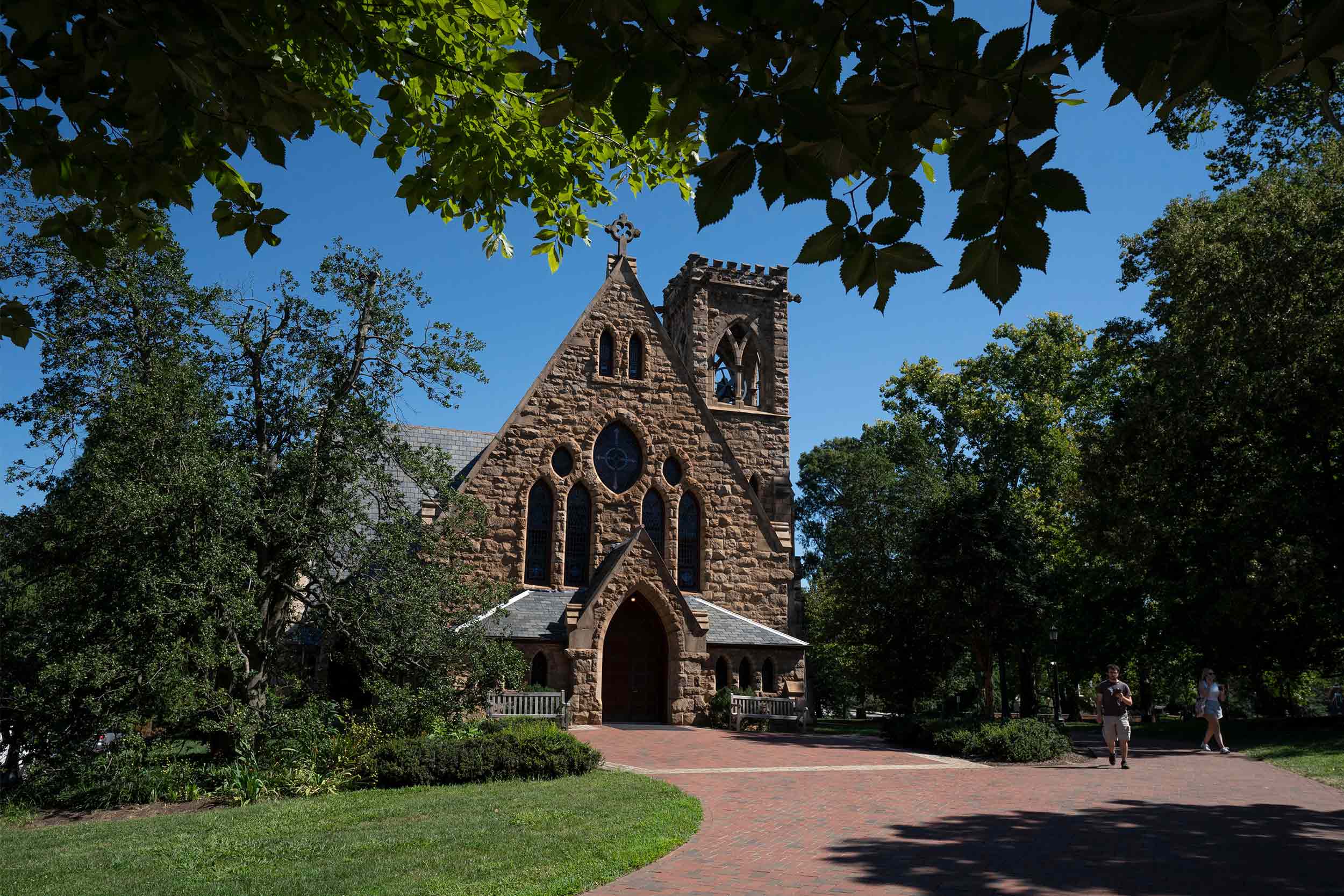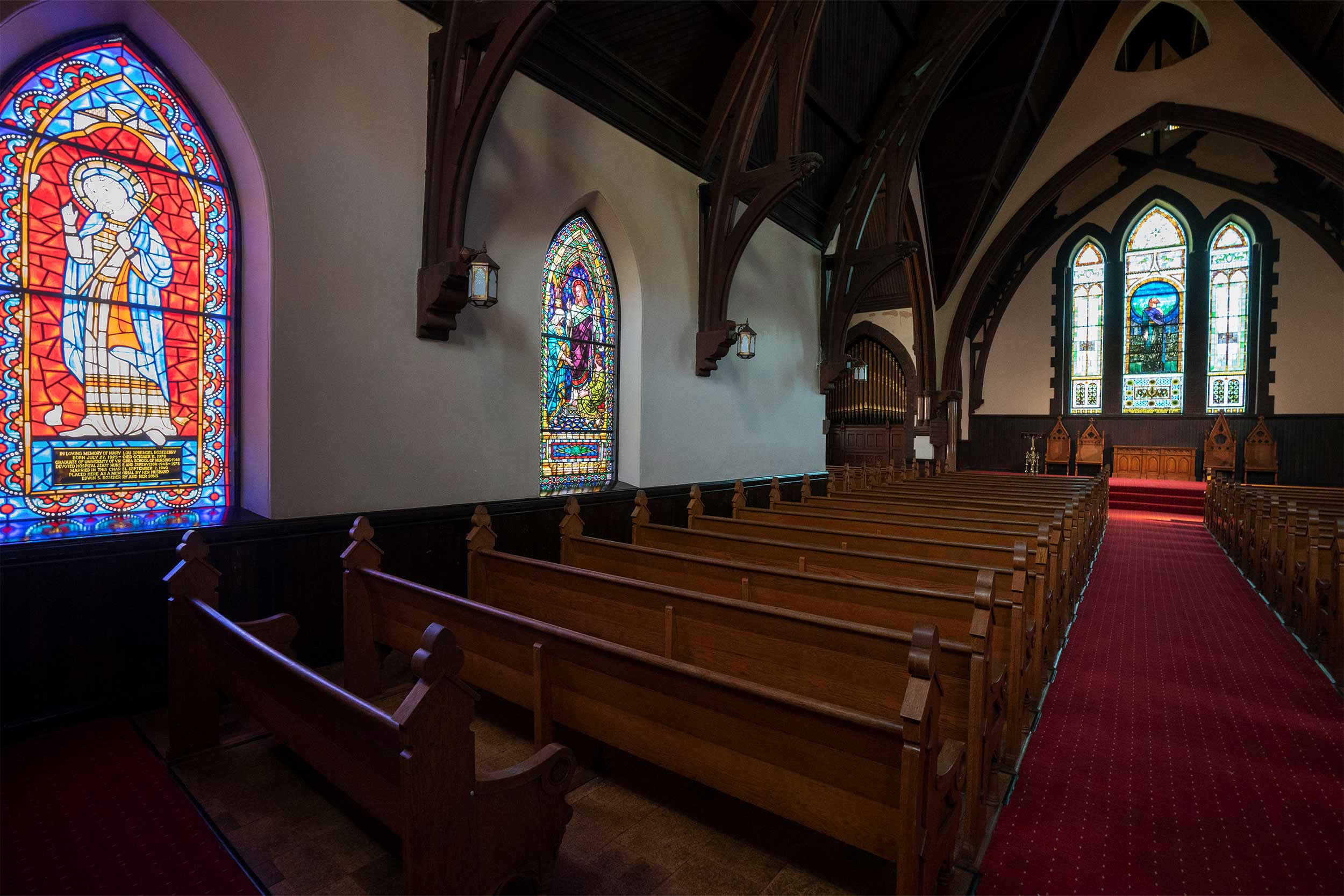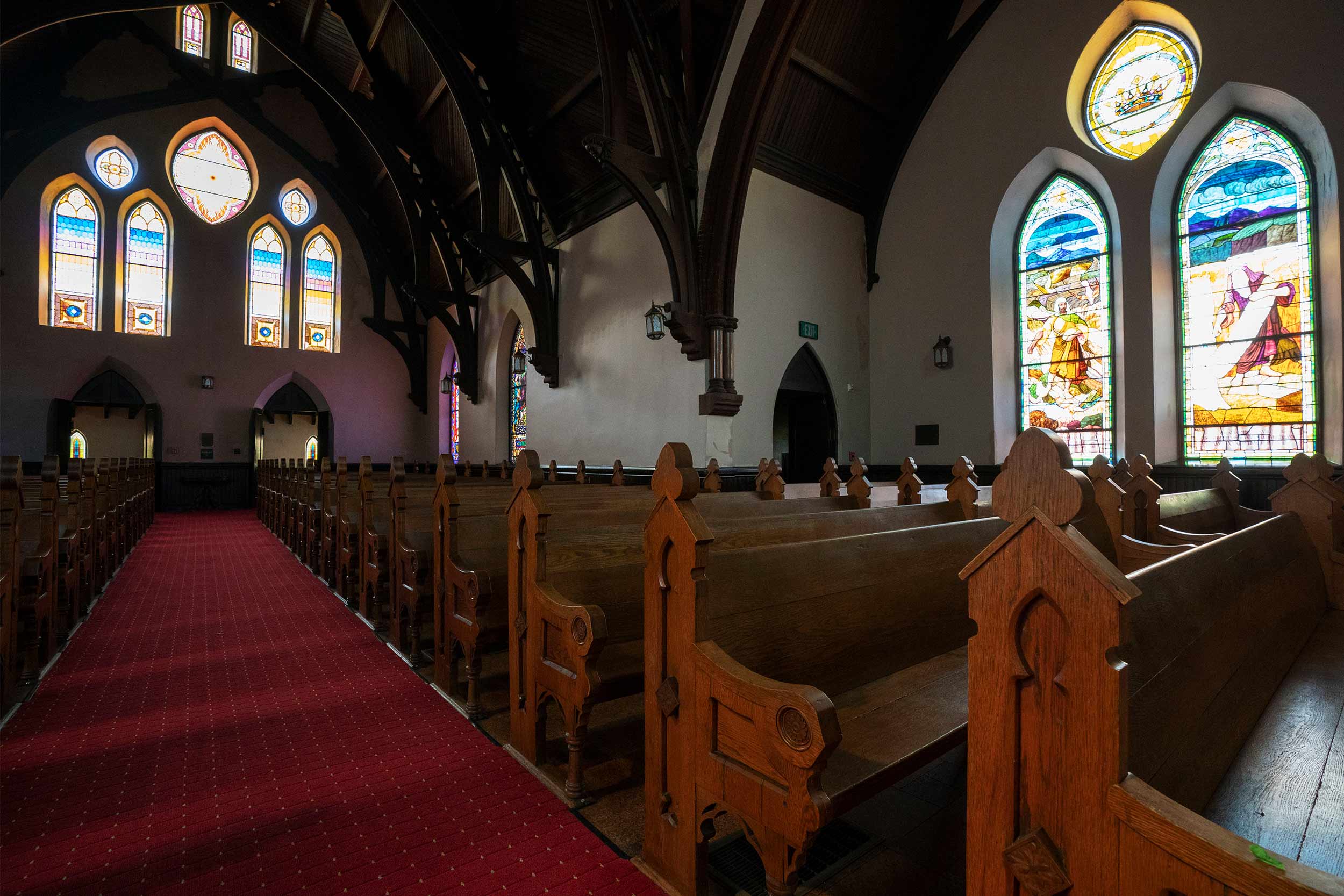For the first time since the 1950s, renovations are planned for the University of Virginia Chapel.
The 137-year-old Gothic structure will be undergoing work to clean, restore and refinish historic surfaces throughout its interior, including wainscotting, chair rails and baseboards, doors, elements of the wood ceiling, brick arches, and its columns. The building will be closed for about six months starting Jan. 2.
The work, to be performed by UVA Construction & Renovation Services with assistance from an architectural conservation firm to be selected this fall, also will replace lighting, update the smoke detection system, repair damaged plaster and paint the walls.
“Some of this interior work is related to the 2021 exterior repointing and waterproofing effort,” Ryan Taylor, the central grounds maintenance zone manager for Facilities Management, said. “Much of the interior plaster damage was due to water infiltration, which has now been corrected, so we can move forward with plaster repairs and painting.”
The leaks have been a challenge.












